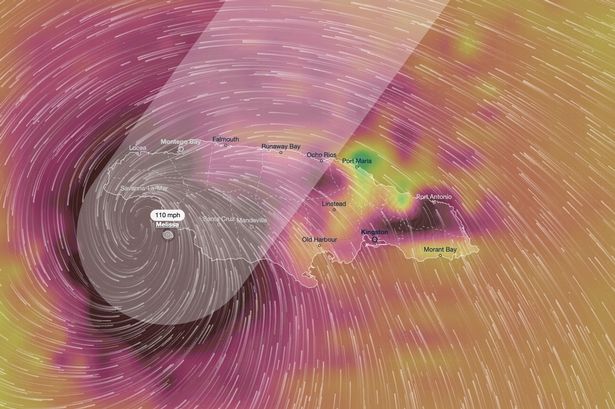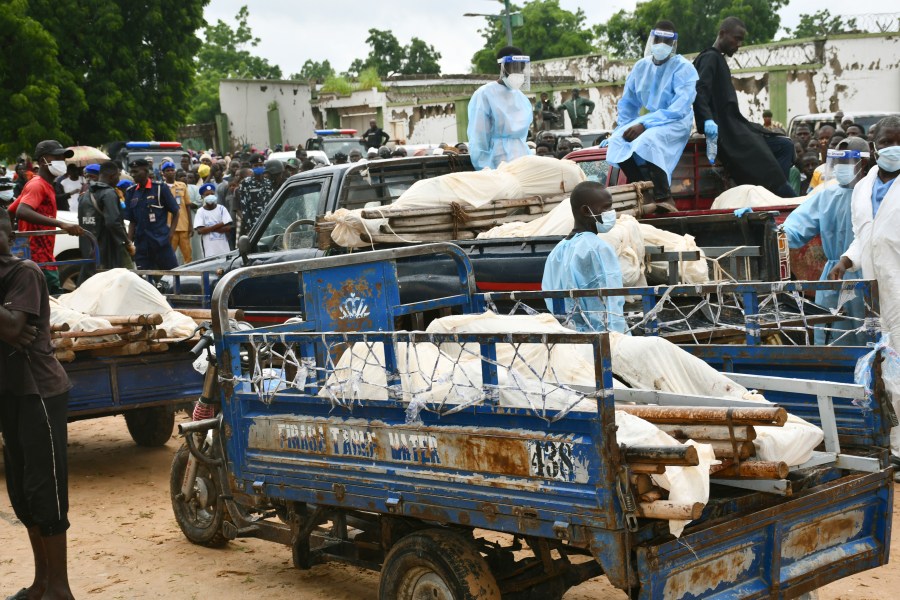As Hurricane Melissa approaches, Jamaica is bracing for catastrophic damage. The storm, classified as a Category 5 hurricane, has maximum sustained winds exceeding 165 mph, with forecasts indicating potential gusts up to 180 mph. According to AccuWeather, storm surges may reach heights of 15 feet, particularly impacting the southern coast. Landfall is anticipated early on March 5, 2024.
The hurricane is projected to be the strongest storm of the year, with implications extending beyond Jamaica to Haiti, the Dominican Republic, and Cuba. Authorities warn of deadly winds and torrential rainfall, which could lead to catastrophic flooding and landslides that may persist into early next week.
In Kingston, Milton Walker, director of news and sports at RJRGleaner Communications Group, provided insights into the unfolding situation. He noted, “They’re predicting catastrophic flash floods and landslides, and we already have some landslides.” Walker reported that trees have fallen on power lines in several areas, including Central Elizabeth and Portland. He described the atmosphere in Kingston as tense, with “a fair amount of worry and anxiety” among residents.
The Energy Minister has reported that thousands are currently without power, and all three of Jamaica’s international airports—Norman Manley International Airport in Kingston, Ian Fleming International Airport in Ocho Rios, and Sangster International Airport in Montego Bay—are closed. The Ministry of Health has established hotlines for residents seeking counseling as anxiety levels rise.
Evacuation efforts are underway, though Walker mentioned that some residents have shown reluctance to leave their homes. Government officials reported that by the morning of March 5, only 972 people had sought shelter, despite the expectation that approximately 50,000 people should have been relocated to safety. Minister of Local Government and Community Development, Desmond McKenzie, stated in a recent press conference that of the nation’s 881 hurricane shelters, only 76 are currently active. Clarendon has the highest number of evacuees with 311, followed by St. Thomas with 227, and Kingston and St. Andrew with 179.
Walker emphasized the importance of timely evacuations, urging residents to heed government warnings about deteriorating conditions. He remarked, “Some people are saying they want to move later this afternoon, but the government is stressing that it’s best you leave now.” Preparations for Hurricane Melissa began last week, with efforts focused on clearing drainage systems and preparing shelters.
Evacuation orders have been issued for several vulnerable areas, including Port Royal in Kingston, Portland Cottage in Clarendon, and Rocky Point in Clarendon. Walker has opted to remain at his office in Kingston, which has been fortified with hurricane shutters and built from robust concrete. “Our building is pretty robust,” he stated. “That’s one of the safest places.”
Historically, Jamaica has faced the threat of hurricanes, and Walker noted that homes and businesses are typically constructed from reinforced concrete. “In Jamaica, we know we have hurricanes and we are in an earthquake zone, so our buildings have to be strong and robust,” he explained.
Hurricane Melissa represents an unprecedented threat to Jamaica, marking the strongest direct hit since Hurricane Gilbert in 1988. Walker reflected on the impact of past storms, noting that the devastation from Gilbert was significant, leading to extensive damage and loss of life. The last hurricane of comparable severity occurred 37 years prior, in 1951.
As the storm approaches, Jamaica faces a critical situation that demands prompt action and community support. The coming days will be pivotal in determining the extent of Hurricane Melissa’s impact on the island and its residents.







